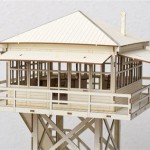Essential Aspects of House and Floor Plans
House and floor plans are crucial elements in the design and construction of any building. They provide a comprehensive representation of the layout, dimensions, and arrangement of spaces within a structure. Understanding the essential aspects of house and floor plans is vital for both homeowners and professionals involved in the building process.
1. Types of House Plans
There are various types of house plans, each with its unique features and advantages. Some common types include:
- Single-story houses: These houses have all their living spaces on one level, making them easily accessible and suitable for individuals with mobility issues.
- Two-story houses: These houses have two levels, with stairs connecting the floors. They offer more space and allow for a distinct separation between public and private areas. li>Multi-story houses: These houses have three or more levels, providing ample space for large families or specific functional needs.
- Ranch houses: These houses are typically single-story, with a long, horizontal layout. They offer open and spacious living areas and are often suitable for suburban environments.
- Colonial houses: These houses have a symmetrical façade and a central entrance, often with a porch or columns. They evoke a traditional and elegant style.
2. Floor Plan Layout
The floor plan layout refers to how the different rooms and spaces are arranged within a house. When evaluating a floor plan, consider the following aspects:
- Flow and traffic: The layout should allow for smooth movement between rooms and avoid awkward or crowded spaces.
- Room sizes and proportions: Rooms should be appropriately sized and proportioned to fit their intended functions and accommodate furniture comfortably.
- Natural lighting: The layout should maximize natural light, ensuring rooms are well-illuminated.
- Privacy and separation: Private areas, such as bedrooms and bathrooms, should be separated from public areas for privacy and comfort.
3. Scale and Measurements
House and floor plans are typically drawn to scale, meaning they accurately represent the actual dimensions of the structure. Understanding the scale is crucial for understanding the size and layout of the house.
Measurements are also essential, as they provide specific details on the dimensions of rooms, walls, and openings. These measurements allow for precise construction and ensure that all elements fit properly.
4. Electrical and Plumbing Plans
In addition to the floor plan, electrical and plumbing plans are also essential for a complete understanding of the house's design. These plans indicate the locations of electrical outlets, light fixtures, plumbing fixtures, and piping.
Electrical and plumbing plans are vital for planning the installation of these systems and ensuring the proper functioning of the house.
5. Architectural Styles
House plans can reflect different architectural styles, each with its unique characteristics and aesthetics. Some common architectural styles include:
- Contemporary: Characterized by clean lines, open spaces, and an emphasis on natural light.
- Traditional: Inspired by historical styles with symmetrical facades, detailed moldings, and ornate features.
- Modern: Emphasizes form and functionality, with simple and geometric shapes, large windows, and open floor plans.
- Craftsman: Features natural materials, exposed beams, and a cozy and inviting atmosphere.
- Mediterranean: Influenced by Spanish and Italian architecture, with terracotta roofs, arched doorways, and enclosed courtyards.
6. Customizing House and Floor Plans
Homeowners and builders have the flexibility to customize house and floor plans according to their specific needs and preferences. This may involve:
- Modifying existing plans: Adjusting the layout, room sizes, or architectural features to suit individual requirements.
- Creating custom plans: Designing a house plan from scratch, tailored to the homeowner's unique vision and lifestyle.
Conclusion
House and floor plans are essential tools for understanding the design and layout of any building. By considering the type of house plan, floor plan layout, scale and measurements, electrical and plumbing plans, architectural styles, and customization options, homeowners and professionals can make informed decisions that result in a functional, aesthetically pleasing, and personalized living space.

House Plans How To Design Your Home Plan

House Plans How To Design Your Home Plan

Free Home Plans House Floor

Top Tips For Choosing A Floor Plan Your New Home

Same House Floor Plan Diffe Exterior Houseplans Blog Com

Two Story Home Floor Plan

Unique Two Story House Plans Floor For Luxury Homes Design New

House Plans Floor Blueprints

House Plans How To Design Your Home Plan

Modern Dwelling House Plans Home Designs Floor








